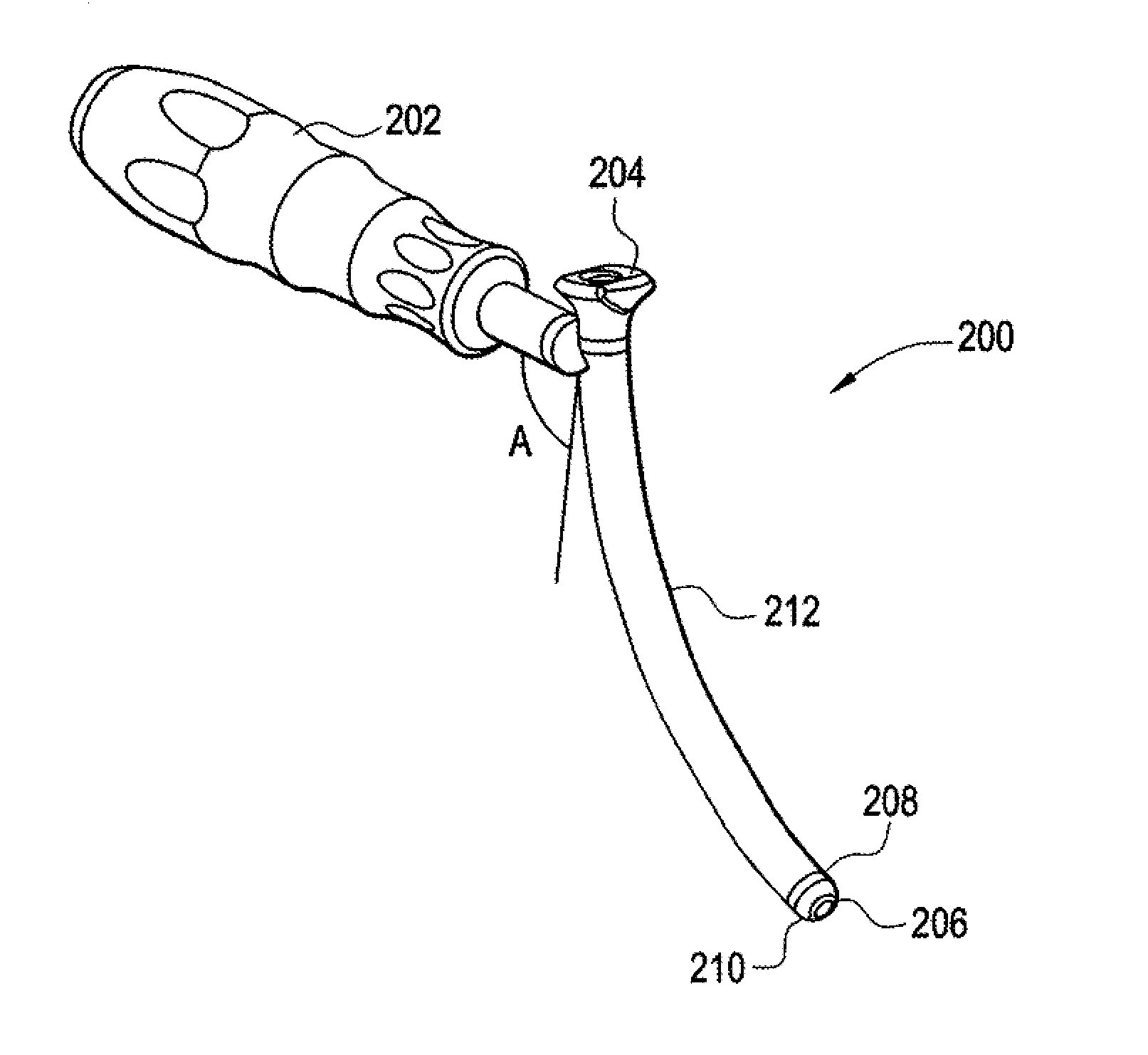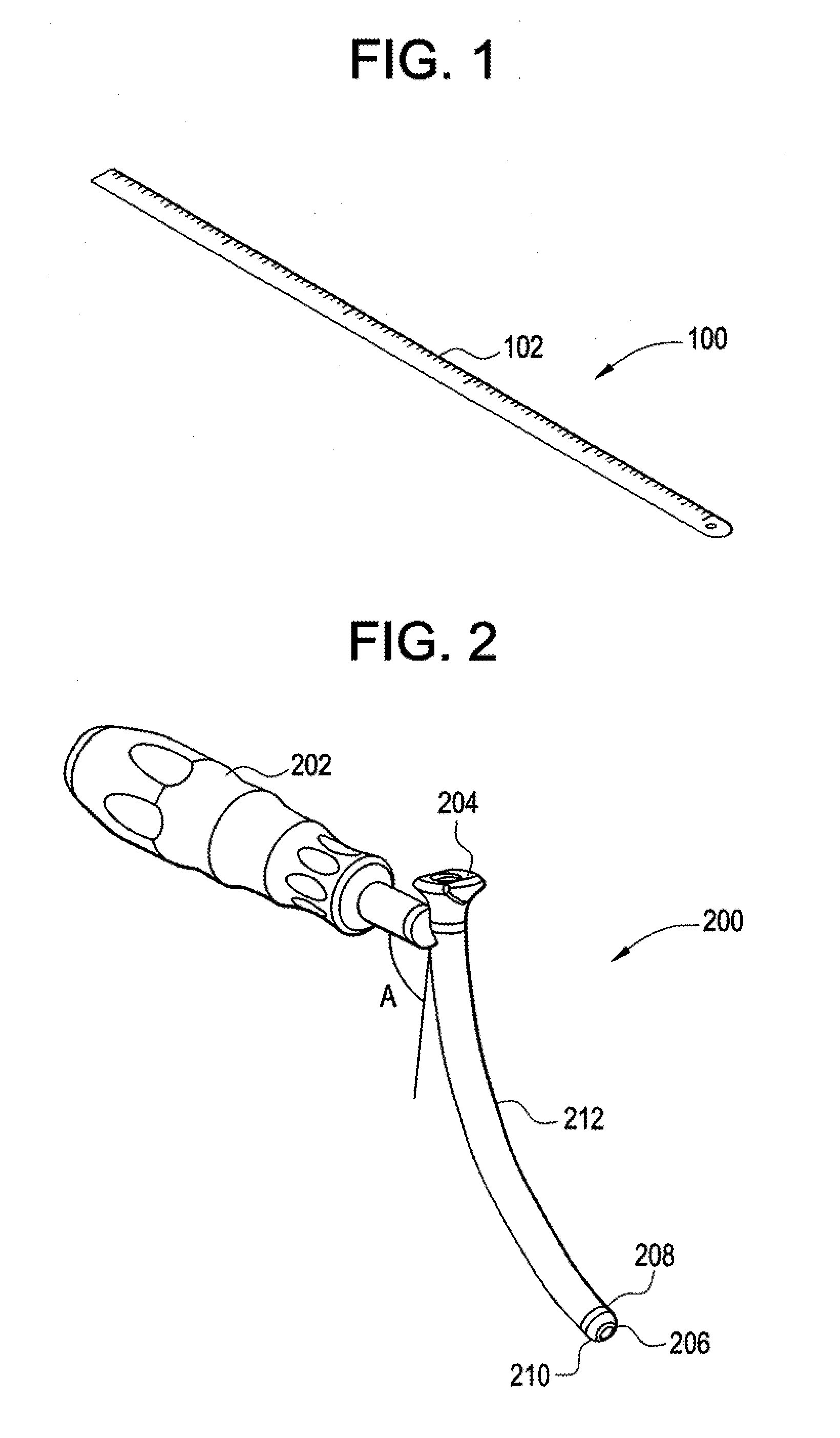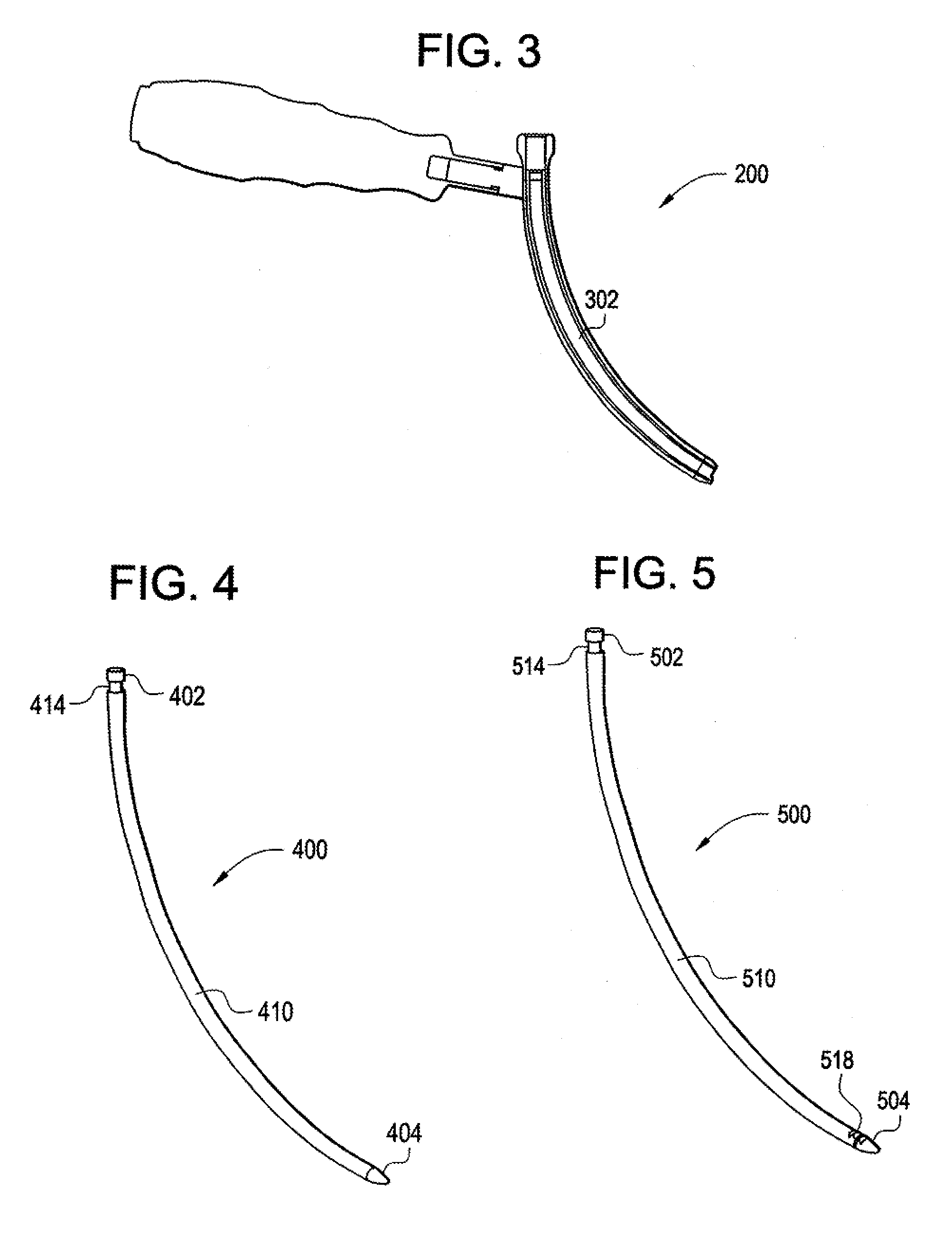Curvilinear spinal access method and device
a curvilinear and spine technology, applied in the field of surgery, can solve the problems of inability to safely allow revision or re-exploration, limited widespread adoption of techniques in the medical community, and increased complication
- Summary
- Abstract
- Description
- Claims
- Application Information
AI Technical Summary
Benefits of technology
Problems solved by technology
Method used
Image
Examples
example procedure
A
[0164]This example procedure is generally related to many of the embodiments disclosed in FIGS. 1-44c.
[0165]The procedure begins with placing the patient in a prone position and arranging the proper drapery to establish proper sterilization of the operation site. Next, the surgeon uses a measuring device to measure a specified distance from the midline. At this point, the surgeon will make a mark using some marking device as a reference point to create an incision. The specified distance can be calculated using a chart or sliding scale that determines the appropriate distance to make the incision. This distance is directly related to the distance of the center of the vertebral body to the flat surface of the patient's back; given this distance along with the known arc angle of the portal and known center of the midline, the incision distance can be properly calculated.
[0166]An incision is created at the marked point and the surgeon performs blunt dissection with a finger to estima...
example procedure b
[0175]This example procedure is generally related to many of the embodiments disclosed in FIGS. 45-98.
[0176]The procedure begins with placing the patient in a prone position on the surgical table and, with the aid of lateral fluoroscopy, adjusting the patient so that the operative disc space is generally perpendicular with the operating room floor. Using lateral fluoroscopy, a locating wire is placed directly posterior to the center of the disc space at the desired level. The locating wire is then advanced approximately 5 mm past the posterior portion of the localized spinous process. A calibrated introducer is placed over the locating wire. A vertical pin is then slid over the end of the swing arm of the calibrated introducer until the vertical pin is approximately 1 cm away from the patient's skin. Using lateral fluoroscopy, the height and positioning of the vertical pin is adjusted until a distal tip of the vertical pin approximately lines up with the center of the vertebral disc...
PUM
 Login to View More
Login to View More Abstract
Description
Claims
Application Information
 Login to View More
Login to View More - R&D
- Intellectual Property
- Life Sciences
- Materials
- Tech Scout
- Unparalleled Data Quality
- Higher Quality Content
- 60% Fewer Hallucinations
Browse by: Latest US Patents, China's latest patents, Technical Efficacy Thesaurus, Application Domain, Technology Topic, Popular Technical Reports.
© 2025 PatSnap. All rights reserved.Legal|Privacy policy|Modern Slavery Act Transparency Statement|Sitemap|About US| Contact US: help@patsnap.com



